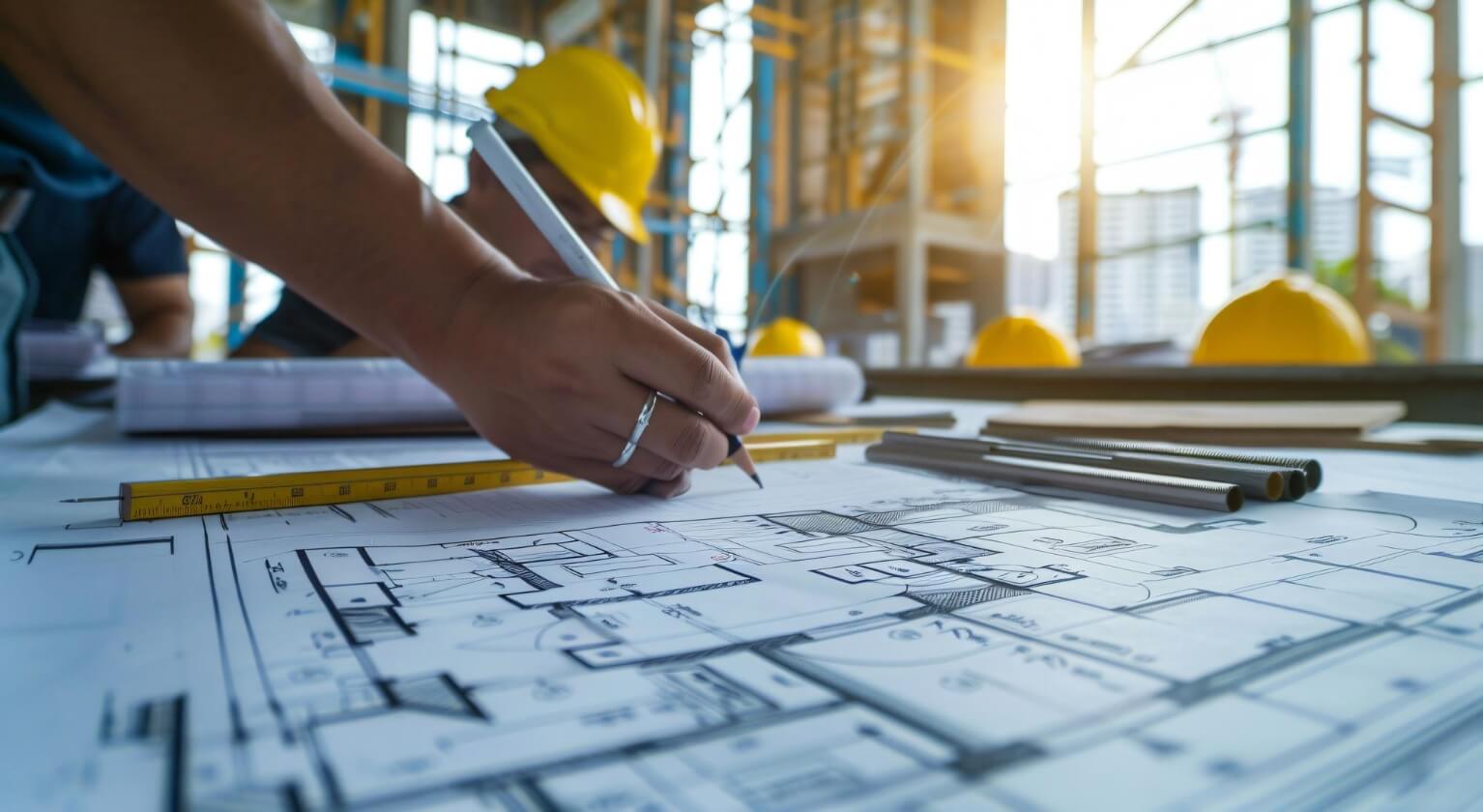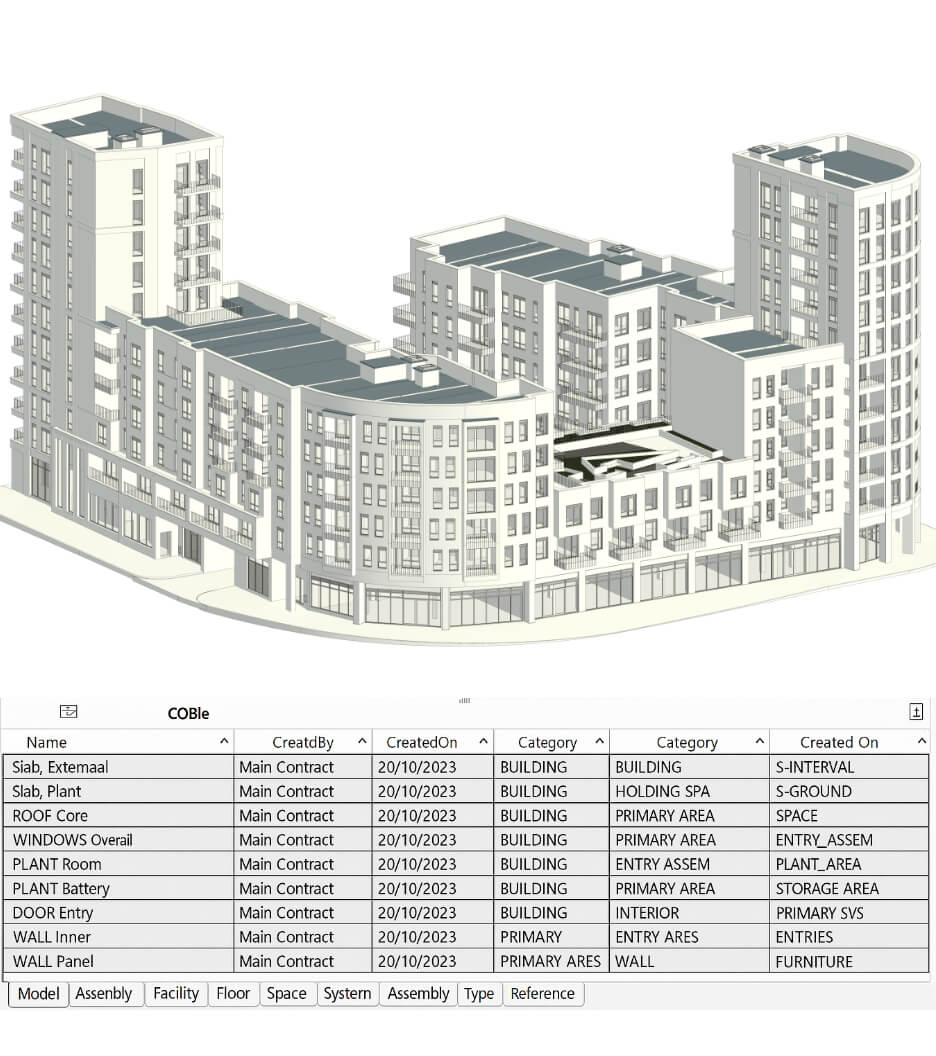 Rahul Dogra
Rahul DograCompelling Role of Construction Documentation for Accuracy & Collaboration
 Rahul Dogra
Rahul Dogra
Send Us Your Requirement
The dynamic realm of the architecture and construction industry is crucial for maintaining and enhancing the level of accuracy in every project. As complex as any project is, accuracy, safety, and efficiency are paramount to success in the AEC industry. Since the architecture and construction landscape has witnessed the power of BIM, it has led to minimal errors and better project outcomes, helping architects, engineers, and other collaborators work seamlessly. With that comes another vital aspect that plays a crucial role in any infrastructure project is the organized and accurate documentation of the project.
Since the economy is vast, the acute importance of documentation prevails in every industry. Similarly, in the world of architecture, documents are one of the significant parts of any project that builds the base of accuracy and effective communication & collaboration. Although the world of AEC in the modern era depends on BIM modeling services for several reasons, then how documents are vital in the process.
We all know the power of BIM technology and how it has transformed the AEC workflow. However, the construction of any residential or commercial project is nearly impossible without accurate documentation. Everyone, from architects and engineers to every regulatory authority involved in the construction projects, relies on a scrupulous system of organizing, accessing, and updating project-related documents.
Draft Accurate Construction Documentation with UniquesCADD
Get a Quote
Documents in the AEC sector provide essential details, from small to big, that can help professionals involved make informed decisions, maintain the lifecycle of the building, and provide data to comprehend the process further. Due to the detailed information available in each set, such documents help in BIM construction management. All the marvelous infrastructure, facilities, public transportation, or any other building we take advantage of comes from accurate construction projects. This proves the large contribution of the AEC realm to the economy, and to comprehend the vast sector, it is important to understand the keynotes for better vision and clarity.
If looked at from afar, architecture and the construction landscape are all about constructing functional, fundamental, and sustainable infrastructure. However, the sector’s close vision gives a different outlook, consisting of multiple aspects that result in the awe-stacking architecture we see today. Therefore, the role of construction documentation has a wider demeanor helping in the project success. Let’s delve into the deeper meaning of documentation in the construction process, its types, and its significance in the AEC landscape.
Understanding Construction Documentation in the AEC Sector
The architecture, engineering, and construction industry is complex and deals with plenty of aspects, processes, and stages that deliver optimum results. Among many methods, BIM construction documentation is a helpful and important aspect of building an infrastructure. Inaccurate drawings, poor documentation, design clashes, and erroneous detailing are all the former concerns as BIM modeling services have taken over the AEC workflow. It is no fact that BIM is one of the most powerful tools in the industry, which has resolved and enhanced many work approaches for architects, engineers, and other collaborators in the modern architecture and construction sector.
Today, construction processes have become accurate, thanks to BIM technology, where architectural construction documentation plays a considerable role. However, as a vital aspect, it is often overlooked. Documentation in construction projects plays a significant role, helping in drafting details of the project. Accurate documentation is utilized in the planning, designing, and construction process, encompassing vital activities, designs in different phases, and detailing that leads to the project’s overall success.
Construction documents are typically defined as final documents encompassing specifications, materials, dimensions, regulatory standards, construction methods, implementation plans, and more. These documents are utilized in the final stage of the design, where the design is curated according to state policy, construction standards, and regulations. Moreover, construction documentation data is critical because it helps to obtain the permit to build the infrastructure.
In fact, construction documents act as a guide for contractors to communicate and collaborate in every stage of the construction. Well-developed construction documents offer a clear understanding of the materials used, structural methods, and plans with the clients’ vision to reach the end goal. They state the detailed architectural drawings, BIM level of development, specifications, and reports dealing with buildings and structures.
Ignoring the importance of BIM construction documentation can often lead to on-site confusion, errors, and mishappenings, which can lead to delay or the modification of the original architectural plan. With the help of these documents, architects, engineers, and other contractors can manage and facilitate the critical transition of the design to actual construction without any potential errors. Construction documents are also a key point in reducing confusion and mistakes that result in avoiding delays and modifications in the original plan.
Explore the Importance of Construction Document
Construction documentation for projects acts as a blueprint for the infrastructure process and serves as a contractual agreement between the client and the contractor. Such contracts are necessary to maintain a clear communication between the involved parties. This contract helps to ease the further process of rules, regulations, and standardization for the building process. As a matter of fact, AEC professionals Construction documents encapsulate the design intent, project guidelines, and regulatory requirements. With documented details, creates a collaborative approach and clear communication among various parties involved in implementing BIM architectural services.
The importance of BIM construction documents is often overstated. However such construction documents offer fundamental reference points. These points are evident as it involves the pre and post-construction, and project lifecycle from bidding to the final stage. Therefore, it is essential to ensure the accuracy of these documents for better finance management and a definitive source of resolving disputes. By improving the accuracy and collaboration of the construction projects there are other plenty of benefits following are;
- Improved communication
- Expenditure control
- Centralized documentation systems
- Better auditing
- Reduce the chances of errors/ rework
- Easy sharing and accessibility
- Updated feedback
- Informed decision making
- Comprehensive timeline
- Set of references
- Guaranteed safety compliance
- Standards & codes guidelines
These are some of the benefits of BIM construction documentation. It is diversified with various types of construction documentation, which serve as a foundation for any project and as a road map to lead the AEC profession through each phase of the process. Let’s understand the various types and how each helps in construction.
Types of BIM Construction Documentation
Two vital things are included in the construction document process: production and drawings. Typically, BIM construction documentation is drafted per the standards. Various types of construction documents are referred to in the different stages of the construction. The following are the types of construction documents used.
Key Benefits Of BIM For Facility Management
Architectural drawings
MEP plans
Bill of Quantities
Addenda and modifications
Structural drawings
Specifications
Schedules
Permits & Approval
- Architectural drawings: These types of drawing documents typically include floor plans, elevations, sections, and detailed drawings with proper dimensions for the construction project. Architectural drawings are visually detailed designs of the structure.
- Structural drawings: Structural documents provide information on foundation beams, columns, and other structural components that withstand the load and environmental forces. The structural drawings documents also offer detailed insights into the dimensions and materials of the projects.
- MEP plans: MEPs are the critical components of any construction process; therefore, the outlining systems within the building, layout, and installation guidelines for all mechanical, electrical, and plumbing systems.
- Specifications: The construction documentation for the project offers detailed descriptions of the material, workmanship, quality, standards, and approach to the project.
- Bill of Quantities: The documents mention a list of materials, parts, and labor required to construct a project and maintain and repair the structure.
- Schedules: The construction documents include schedules, the timetable for the construction project, delivery schedules for materials, and equipment installations.
- Addenda and modifications: Such types of construction documents record any changes, amendments, and upgrades to the construction drawings or specifications during the bidding process. These documents make it easier for professionals to track the number of changes during the process.
- Permits & Approval: This construction documentation is drafted to obtain regulatory approval for the construction project. Permits and approvals are quite important as without a single disapproval, the project cannot begin. These documents demonstrate compliance with infrastructure codes, environmental laws, and zoning regulations.
The major construction documentation mentioned above helps in easing the infrastructure process. Effective construction documents require careful planning, attention to small details, and adhering to best practices, which bring fruitful results for the projects and help AEC professionals achieve the project goals to meet client satisfaction.
Nonetheless, drafting BIM construction documentation isn’t easy and requires detailed planning and expertise from BIM services provider. Hence, it is essential to hire a reliable BIM company; UniquesCADD is one of the renowned and trustworthy BIM modeling services providers with a talented team of professionals and a blend of cutting-edge technology. As a matter of fact, maintaining the construction workflow makes it evident that best practices for BIM construction documentation should be adopted.
Effective Practices for Construction Documentation
Best practice and careful planning for BIM construction management requires attention to detail and expertise to create comprehensive documents. As discussed, AEC professionals can draft accurate documents for construction projects and reduce the inconsistencies in the errors. Following are some of the prime aspects that help to make the construction documentation more efficient and accurate.
- Start early: Construction documentation can be effectively drafted when started at the beginning, from the planning stage. The initial phase is important to draft details accurately in order. This involves capturing key decisions, requirements, and objectives as the project develops.
- Standardize formats: It is important to establish standardized templates, formats, and naming conventions for documentation to manage the project documents thoroughly.
- Version control: This is a significant practice to ensure which version is approved at the particular stage. Implementing robust version control for documents can help track frequent changes, revisions, and updates while preventing confusion and ensuring accuracy.
- Review regularly: It is important to review the documents to ensure its accuracy. Conduct reviews regularly to check and audit documentation and identify errors, omissions, and inconsistencies.
- Organize effectively: organize the construction documentation in an appropriate manner to ease the navigation of the location for information as required.
- Collaborate actively: To foster effective collaboration and communication among various AEC professionals and encourage feedback and coordination throughout the project lifecycle.
These are some tips which are helpful to get accurate, precise, and effective BIM construction documentation. In fact, these tips are generic and can be altered as per the project requirement. Moreover, the use of technologies is also an evident factor. Let’s explore some of the technologies that can be fruitful in curating construction documentation.
Leverage Technologies for BIM Construction Documents
Technology has played a significant role in the digital age and modern architecture, engineering, and construction realm. Today, technology and emerging innovations streamline the complex workflow, enhance the building process, and curate accurate and efficient designs. However, a wide range of software, tools, and platforms can be useful for an effective construction documentation process to maintain, manage, and organize crucial sets of reference documents. The following are the major technologies;
Key Benefits Of BIM For Facility Management
Building information modeling
Cloud computing
Document management system
Mobile apps
- Building information modeling: BIM is one of the most powerful tools. BIM architectural services acutely help enable multidisciplinary collaboration and information access for various AEC professionals.
- Document management system: This is another platform that helps centralize documents for storing, organizing, and accessing project documentation, improving version control, and maintaining document security.
- Cloud computing: It is one of the most effective and comprehensive technologies. Cloud-based solutions offer scalable and accessible platforms as it is an effective way to enhance communication and collaboration, facilitating real-time communication, remote work capabilities, and more.
- Mobile apps: Another tech advancement is mobile apps which are slowly becoming popular. Mobile apps allow field personnel to access, update, and share construction documentation, enabling streamlined workflow and data capture on site.
These are few of the technologies to leverage for precise construction documents. Apart from these mentioned technologies, there are other emerging innovations that collaborate on the project. Moreover, incorporating these technologies into the construction document drafting workflow results in better productivity, precision, and fruitful project outcomes.
Effective and efficient BIM construction management has become evident in AEC. Construction management enhances the process and brings desirable outcomes. Offering precise framework, compliance, and accurate project timelines, AEC professionals can navigate the complexities, mitigate risk to enhance operational efficiency, and make informed decision-making processes.
Final Words
As the AEC realm continues to grow and evolve with emerging technologies, investing in advanced construction document solutions can significantly drive success, ensure project excellence, maintain workflow, and more. The BIM construction documentation process is essential to implement in any project to maintain and manage project collaboration, productivity, and accuracy.


